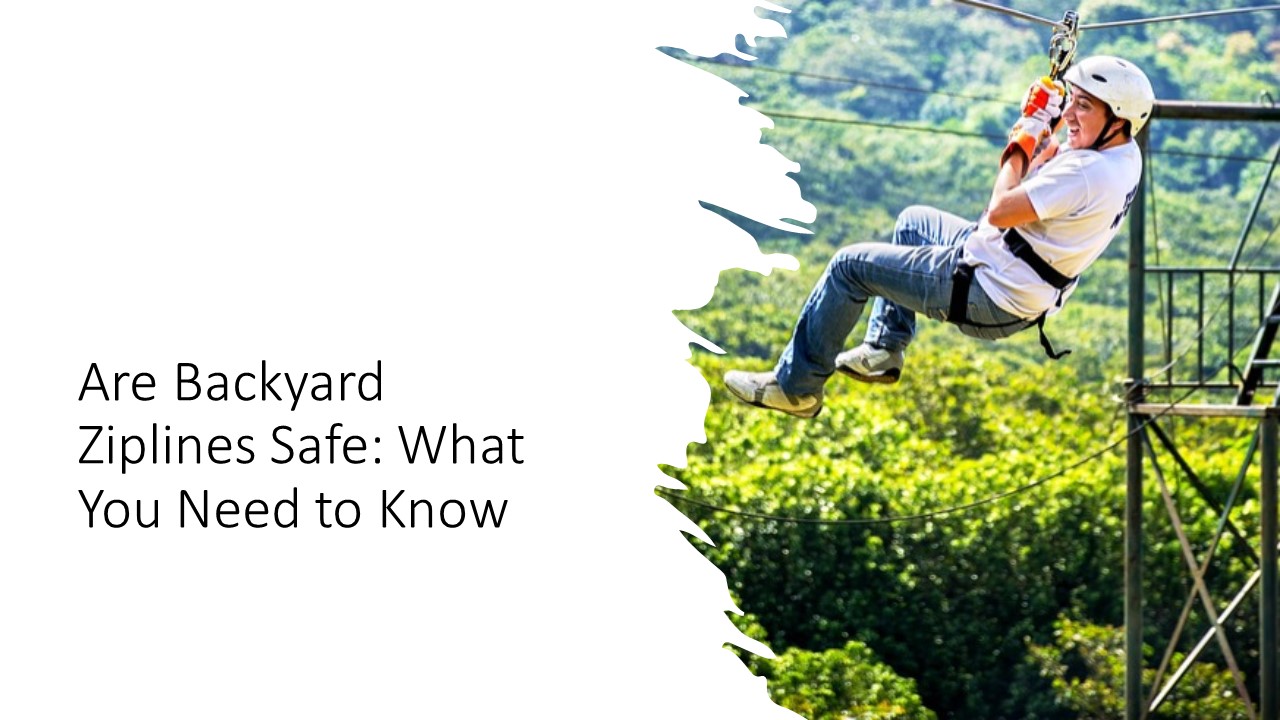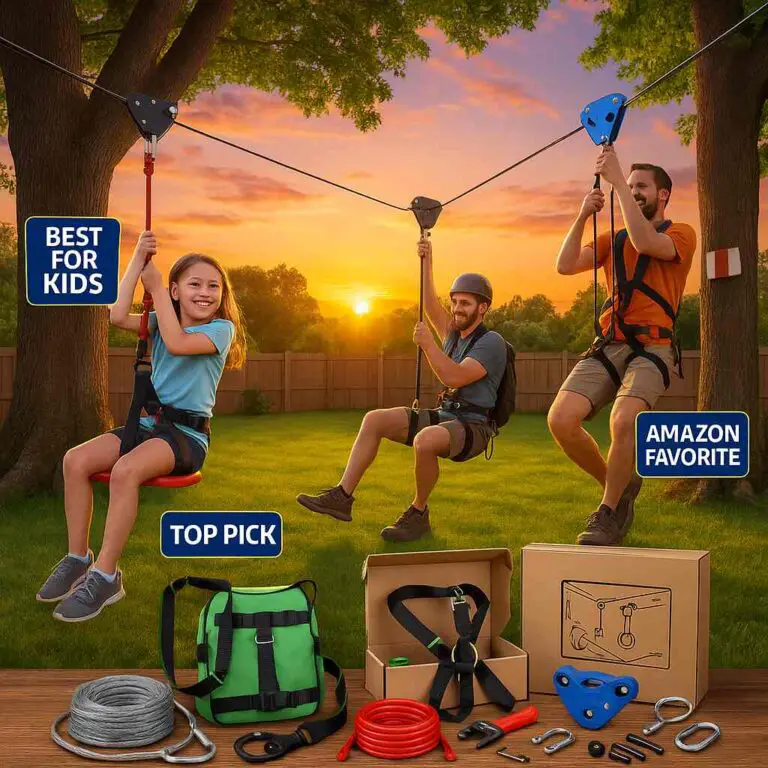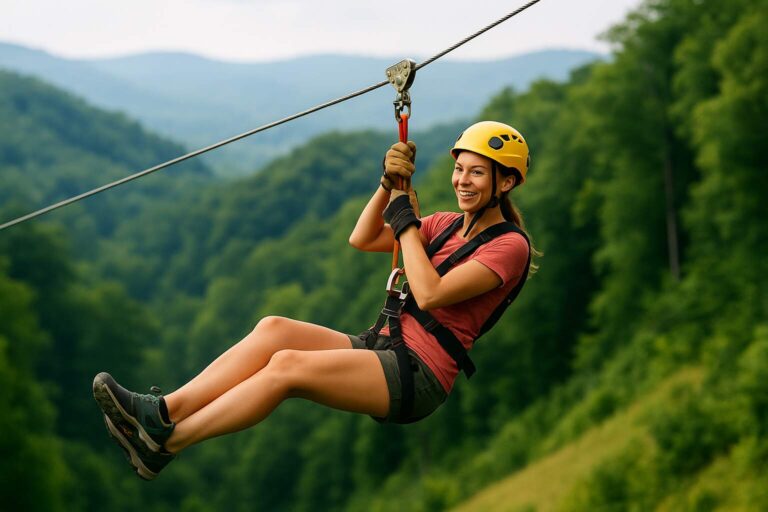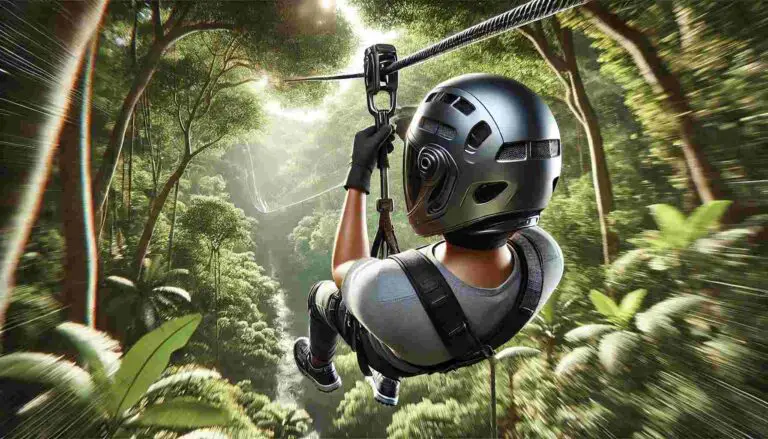Backyard zip lines have become increasingly popular in recent years as they offer a thrilling and exciting activity for both children and adults. However, as with any adventure sport, there are potential dangers associated with backyard ziplines that need to be taken seriously. In this article, I will explore the question of whether backyard ziplines are safe, examine the potential risks, and provide guidelines for ensuring the safety of backyard zipline installations. While the idea of soaring through the air at high speeds can be exhilarating, it is crucial to prioritize safety measures to prevent accidents and injuries.
Are Backyard Ziplines Safe?
Backyard zip lines can be safe if proper safety measures are taken, such as professional installation, regular maintenance, appropriate equipment selection, age and weight restrictions, user training, and adult supervision. However, backyard ziplines do come with potential risks and dangers, including falls, collisions, equipment failure, improper braking, weather conditions, user error, and inadequate weight limits.
Homeowners should also be aware of the legal considerations associated with installing a backyard zipline, including liability, permits, insurance, waivers, and nuisance. Ultimately, backyard zip lines can be a fun and safe activity with proper safety measures in place, and homeowners should prioritize safety when installing and using backyard ziplines.
The potential dangers of backyard ziplines
Backyard zip lines can pose various risks and dangers, which can result in serious accidents and injuries. Here are some of the potential dangers of backyard ziplines:
- Falls: The most significant danger associated with backyard ziplines is the risk of falling from a height. Falls can result from equipment failure, user error, or inadequate installation of the zipline.
- Collisions: In multi-line zipline setups or when two users are on the same zipline, there is a risk of a collision resulting in injury.
- Equipment failure: Backyard zipline equipment, including cables, pulleys, and harnesses, can malfunction, leading to falls and injuries.
- Improper braking: Failing to stop at the end of the zipline due to ineffective braking systems or user error can result in collisions or falls.
- Weather conditions: Wind, rain, or snow can affect the safety of backyard zip lines, making them more hazardous to use.
- User error: Lack of proper training and supervision, or failure to follow safety guidelines can lead to accidents and injuries.
- Inadequate weight limits: Exceeding the weight limit of the zipline or harness can cause equipment failure or lead to a fall.
It is essential to consider these risks when installing and using a backyard zipline and take the necessary safety measures to prevent accidents and injuries.
Factors that Impact the safety of backyard ziplines
Several factors can impact the safety of backyard zip lines, including:
- Installation and Maintenance: The zipline should be installed by a professional or an experienced individual and inspected regularly to ensure that all components are secure and functioning correctly. Proper maintenance, including regular cleaning and lubrication of equipment, is necessary to avoid malfunctions.
- Equipment: Choosing high-quality equipment, including cables, pulleys, and braking systems, is crucial for ensuring the safety of backyard zip lines. It is essential to select equipment appropriate for the user’s weight and age.
- Age and Weight Restrictions: Many backyard ziplines have age and weight restrictions. Ensuring that users fall within these limits is crucial to prevent equipment failure and accidents.
- Supervision and Training: Backyard zip lines should be used with adult supervision and only by individuals who have received adequate training on how to use the equipment safely. Users should know how to put on and adjust their harnesses, use the braking system, and control their speed and direction.
- Terrain and Location: The terrain where the zipline is installed should be carefully considered, and the location should be free of obstacles and hazards. The zipline should be installed on a sturdy structure that can support the weight of users.
If you pay attention to these factors and take the necessary safety precautions, backyard zip lines can be a fun and safe activity for users of all ages.
Steps to Ensure the Safety of backyard ziplines
To ensure the safety of backyard zip lines, the following steps should be taken:
- Installation: Backyard zip lines should be installed by a professional or an experienced individual. The installation should include the appropriate selection of equipment and the correct placement of anchors and support structures.
- Maintenance: The zipline should be inspected regularly to ensure that all components, including cables, pulleys, and braking systems, are secure and functioning correctly. Regular cleaning and lubrication of equipment are also necessary to avoid malfunctions.
- Equipment Selection: High-quality equipment, including cables, pulleys, harnesses, and braking systems, should be selected based on the user’s weight and age. Proper equipment selection can help prevent equipment failure and accidents.
- Safety Guidelines: Users should be provided with safety guidelines that include the proper use of harnesses, the importance of proper braking, and how to control their speed and direction. Users should also be made aware of age and weight restrictions, as well as the importance of adult supervision.
- User Training: Users should receive adequate training on how to use the equipment safely, including how to put on and adjust their harnesses, how to use the braking system, and how to control their speed and direction.
- Supervision: Backyard zip lines should be used with adult supervision to prevent accidents and ensure that safety guidelines are followed.
By following these steps and prioritizing safety measures, backyard zip lines can be a fun and safe activity for users of all ages.
Legal Considerations for backyard ziplines
There are several legal considerations that homeowners should be aware of before installing a backyard zipline:
- Liability: Homeowners may be liable for any injuries or damages caused by their backyard zipline. Therefore, it is essential to take appropriate safety measures to prevent accidents and injuries.
- Permits: Some states or municipalities may require permits or inspections before installing a backyard zipline. It is important to check with local authorities to ensure compliance with all regulations.
- Insurance: Homeowners should review their insurance policies to ensure that they have adequate coverage for any accidents or injuries caused by their backyard zipline. They may need to purchase additional liability insurance to cover the risk associated with backyard ziplines.
- Waivers: Homeowners may consider having users sign a waiver of liability before using the zipline. However, waivers may not protect homeowners from all types of liability.
- Nuisance: Backyard zip lines may be considered a nuisance if they create excessive noise or interfere with neighbors’ privacy. Homeowners should consider the potential impact on their neighbors before installing a backyard zipline.
It is essential to consult with legal and insurance professionals to understand the legal implications of installing a backyard zipline and take appropriate measures to minimize liability and ensure compliance with local regulations.
Conclusion
In conclusion, while backyard ziplines can offer a thrilling and exciting activity for both children and adults, they do come with potential risks and dangers. Falls, collisions, equipment failure, improper braking, weather conditions, user error, and inadequate weight limits are some of the potential risks associated with backyard ziplines.
To ensure the safety of backyard ziplines, homeowners should pay attention to the factors that impact their safety, including installation, maintenance, equipment selection, age and weight restrictions, user training, and supervision. Homeowners should also consider the legal considerations associated with installing a backyard zipline, including liability, permits, insurance, waivers, and nuisance.
Ultimately, backyard ziplines can be a fun and safe activity with proper safety measures, equipment selection, and user training, and homeowners should prioritize safety when installing and using backyard ziplines.








